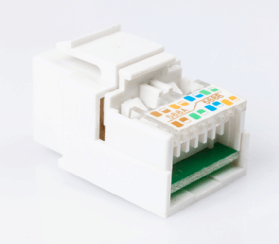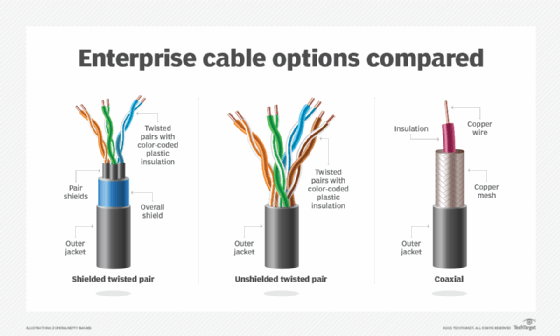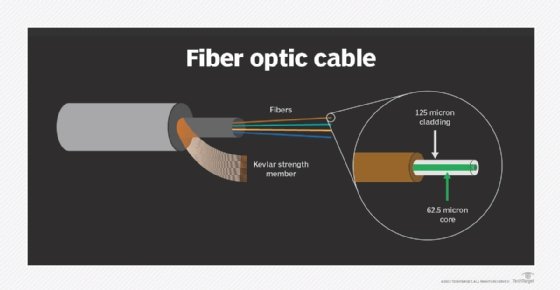keystone jack
What is a keystone jack?
A keystone jack is a female connector used in audio, video and data communications. It serves as a receptacle for a matching plug, which is a male connector of the same type as the jack. A plug is usually attached to the end of a cable or cord that is connected to another device, making it possible to connect the device to the keystone jack.
Keystone jacks are typically mounted in wall plates or patch panels, although they might also be included in surface-mount boxes. They are used extensively in local area networks based on Ethernet technologies.
Benefits of keystone jacks
A principal advantage of keystone jacks is their versatility. Several types of jacks can be mounted on a single wall plate or patch panel, mixed or matched to meet the needs of a specific setup. They are available in unshielded and shielded forms and can accommodate cords and cables with various numbers of conductors.

According to numerous sources, the term keystone derives from the characteristic shape of the jack, which is similar to the type of architectural keystone used in building. However, this is a stretch. They look more like a miniature storage container. Most have a rectangular face that's about 14.5 millimeters wide by 16 mm high, with a flexible tab to hold them in place. Their universal shape and size make it possible to swap out one type of jack for another.
Types of keystone jacks
There are many types of keystone jacks for use in both private and commercial settings. Here are several of the most common types of jacks:
- Banana. These jacks are commonly used to connect speakers to other electronic media, although they might be used in other ways as well, such as for electronic testing equipment.
- F connector. Often called coaxial jacks -- or some variation -- these types of jacks are used to connect coaxial cables, such as those used for cable TV or television antennas.
- Fiber optic. This type of keystone jack is used for connecting fiber optic cables, such as Lucent Connector or Subscriber Connector fiber connections.
![Diagram of fiber optic cable]()
A close look at a fiber optic cable - HDMI. An HDMI keystone jack is a connector based on the High-Definition Multimedia Interface (HDMI) standard, which is used for connecting video and audio equipment, as well as attaching computer monitors.
- RCA. An older type of receptor introduced by the Radio Corporation of America for use with audio equipment, although it also now used for video connectivity as well.
- RJ-11. The RJ-11 is a six-position, six-contact keystone jack commonly used to connect telephone equipment, including conventional headsets, fax machines and answering machines.
- RJ-45. The RJ-45 is an eight-position, eight-contact keystone jack commonly used to connect computer network cables, such as Category 6, Cat6A, Cat7 and Cat8 Ethernet cables.
- 3.5 mm TRS. This type of jack is used for connecting audio equipment that relies on tip, ring and sleeve (TRS) connections, such as those used by many speakers, headphones or microphones.
A category can include multiple variations, as indicated by the different types of RJ-45 connectors. There are also numerous other types of keystone jacks besides those listed here. In addition, you can find blank keystone jacks for use in wall plates and patch panels that cover the jack area, which is usually preferable over an empty hole.
Additional variations
Keystone jacks also vary in other ways. For example, a jack might include shielding against electromagnetic interference, which can be useful if the jack is in close proximity to electronic equipment or when trying to maximize the efficiency of data transfers.

Some jacks might include the same type of connector on either side of the wall plate or patch panel to provide pass-through connectivity, or they might include a male connector on the back side to serve a similar purpose. Often, the back of a jack is set up for hard-wiring, rather than providing any type of receptor or plug. For example, there might be a punch-down area for connecting the individual wires, with the connectors at a 90-degree angle or 180-degree angle.
Explore four ideas for network cable management best practices, and learn about the six components of structured cabling. Read how cable management software enhances documentation and visibility.









